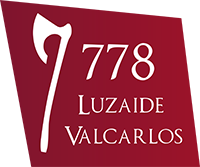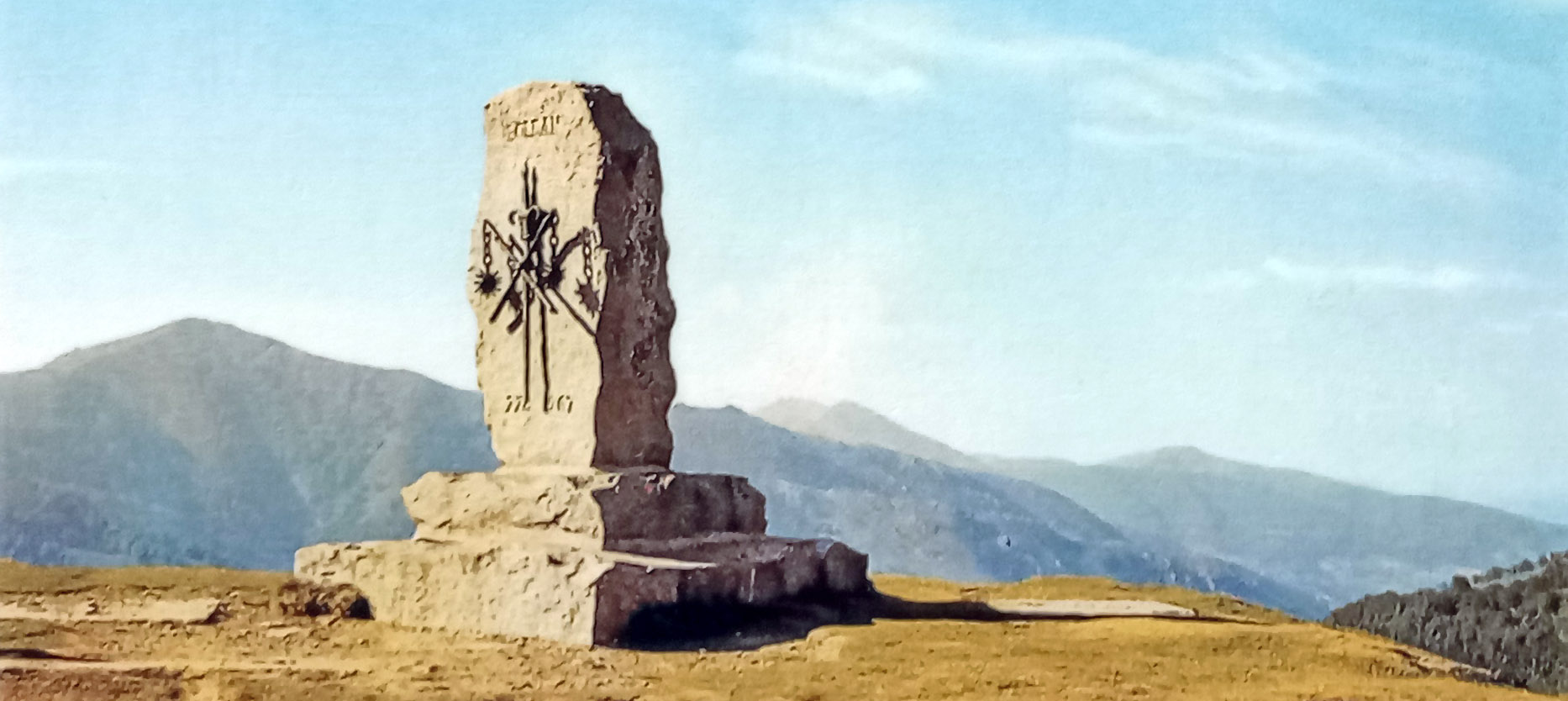The impact of the battle was such that it has transcended time. In 1934, the 100-year anniversary of the discovery of La Chanson de Roland in 1834, a monument was erected in Alto de Ibañeta under the auspices of the Provincial Council of Navarra. At the time it was called the Monument to Peace in the Pyrenees, but it has been given many different names such as Monument to Roland, due to the prominence that it gives that character.
The project was completed by the artist Victoriano Juaristi Sagartzazu, the sculptor Juaristi Sagartzazu and the bell ringer Vidal Erice. It consisted of a large stone arch, an iron sculpture of Charlemagne’s Imperial Eagle and two discoid steles (one of which is displayed in this room). Beneath the arch there was an altar with a bronze tombstone with the image of Roland and there was a bronze bell hanging from the centre of the arch.
On 25 January 1937, a little over two years after its inauguration, a severe storm knocked down the monument’s arch. It was reconstructed in 1938, but the monument was knocked down again by the same weather conditions and it was never rebuilt again.
Years later, the Provincial Council of Navarra embarked on the restoration of Alto de Ibañeta. Firstly, it restored the Hermitage of San Salvador in 1965 and, secondly, it built a new monument to Roland in 1967, following the design of Cándido Ayestarán.
In 1978, another new monument was placed in the gardens of the Collegiate Church of Roncesvalles, with a limestone boulder and bronze frieze and the capital motifs of the Palace of the Kings in Lizarra.










